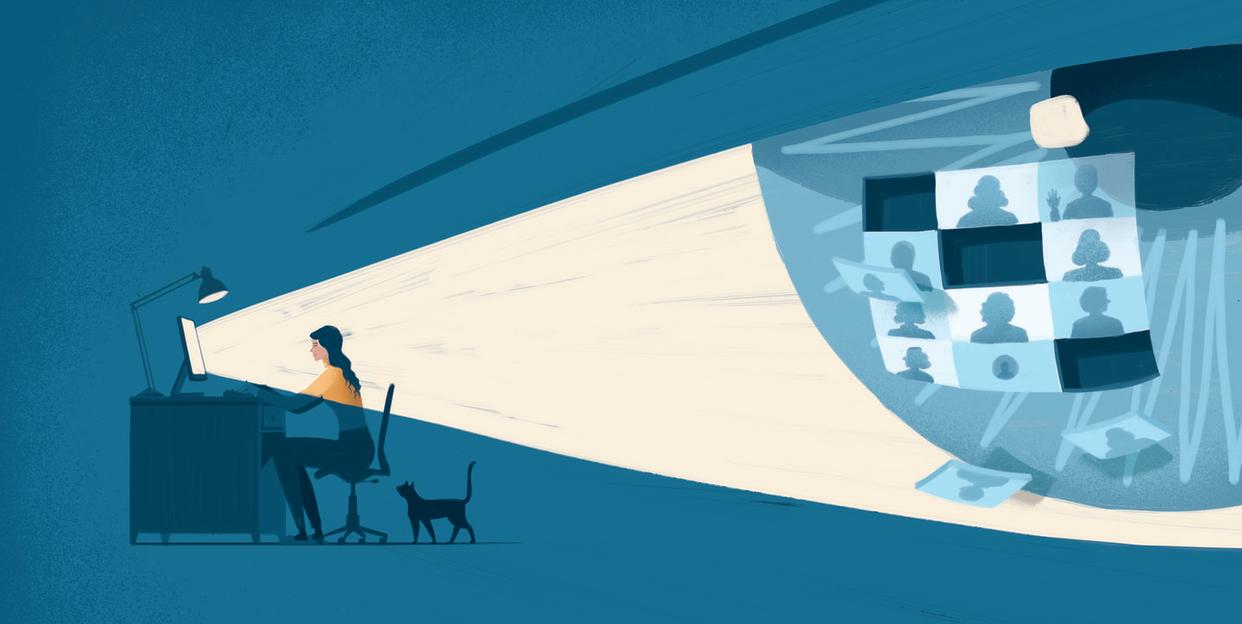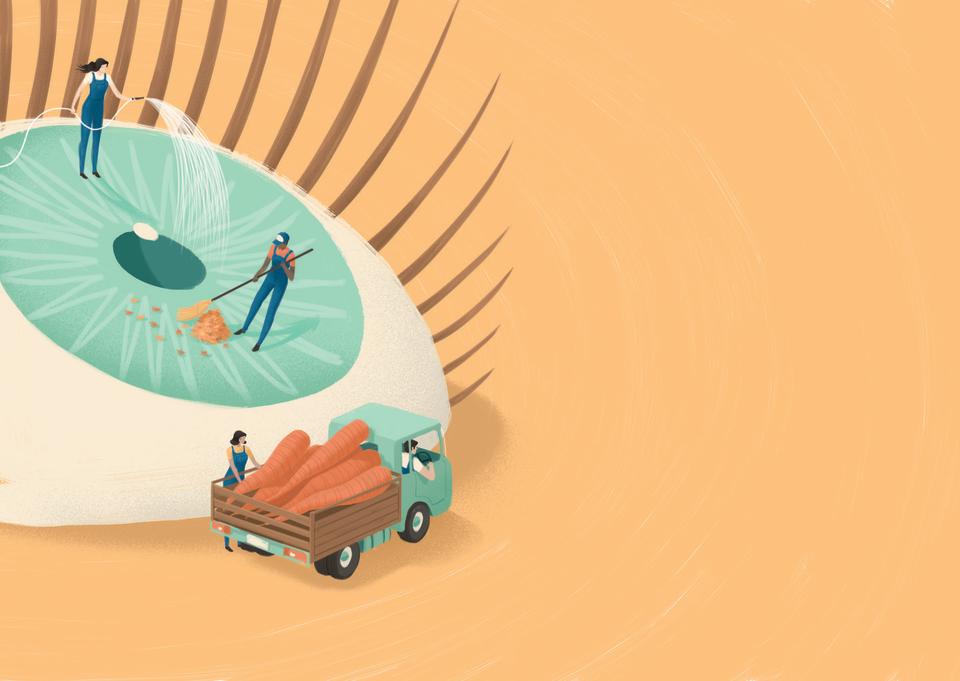Stop Believing These Major Eye Health Myths to Protect Your Vision for Years to Come

Our eyes get so much attention that sonnets have been written about them and songs have been sung about them. Of course, we rely on them for more than their appearance: Having great vision is important for everyday tasks like driving, typing, and reading, not to mention enjoying the gift of being able to see all of the beautiful things around you.
But over time, your eyes can become blurry, teary, irritated, or totally Zoomed-out. It’s important to take care of them throughout your life, but there are lots of misconceptions about how to do that. To see things clearly, you’ll want to separate fact from fiction. Here are the most common myths about your eye health, according to experts.
Myth #1: Staring at a screen all day will wreck your eyes.
Not to worry: All those hours working and Zooming haven’t done permanent damage to your eyes. The blue light from electronic devices like computers, smartphones, and tablets isn’t bright enough to do lasting harm. What that light can do in the short term, says Chris Easley, O.D., of the Milan Eye Center in Alpharetta, GA, is give you eyestrain and dry eye, both of which “are very treatable.”
The reason your eyes dry out after screen time is that “staring at nearby objects for a long time reduces your blink rate,” Easley says. It also tires your eye muscles. One study of college students found that 90% of them experienced symptoms of computer vision syndrome (CVS)—eyestrain, dry eyes, headaches—after two hours of screen time. To combat CVS, blink more often, keep your prescription for glasses or contacts up to date, and give your eyes regular breaks so they can rest and refocus.
Myth #2: If your vision hasn’t changed, you can wait on an exam.
Issues like glaucoma, macular degeneration, and diabetic retinopathy can sneak up on you without symptoms, says Raman Bhakhri, O.D., an associate professor at the Illinois College of Optometry in Chicago. All three can eventually cause irreversible damage, leading to vision loss or sometimes total blindness, but catching them early can potentially stop or delay the damage.
Eye exams also offer clues about the health of your blood vessels, nerves, and connective tissue that can be warning signs of problems such as brain tumors, diabetes, and high blood pressure. Get a comprehensive eye exam at least every two years between the ages of 40 and 64, and every year once you turn 65 or if you have risk factors such as diabetes, high blood pressure, or a personal or family history of eye disease.
Myth #3: Sunglasses are to keep you from having to squint.
Sunglasses are major multitaskers. Sure, they’ll protect your skin from crow’s feet caused by squinting. But damage to the eyes from the sun’s UV rays accumulates over a lifetime, and eventually that UV exposure ups your risk of cataracts, macular degeneration, and skin cancer around your eyes and on your eyelids, says Bhakhri. In fact, up to 20% of cataracts are caused by UV exposure, and 5% to 10% of all skin cancers are on the eyelids, according to the Skin Cancer Foundation. So wear sunglasses with UVA- and UVB-protectant coatings year-round. Make sure your eyeglasses have those coatings as well. And don’t skip the shades on cloudy days: Clouds block only about 20% of UV rays.
Myth #4: The best way to get out an irritant is to make yourself cry.
Hold the tears—crying can help only with minor stuff like an eyelash or a fleck of dirt, Bhakhri says. If you’re experiencing heavy tearing, redness, or light sensitivity because of something in your eye, immediately flush the eye with a sterile, medical-grade saline solution if you have it or else with tap water. Hold your face under a running faucet or shower or use a clean cup to pour water into your eye. If it is no longer red, painful, watering, or irritated after 20 minutes, you are probably in the clear, but see a doctor if redness returns, your eye hurts, or your vision becomes impaired. If something is embedded in your eye or you get a chemical in it, seek immediate medical care, Easley says.

Myth #5: Carrots can improve vision.
You won’t be able to see in the dark no matter how many you munch. That’s because while studies show that carotenoids (do-good micronutrients in carrots) can reduce the risk of cataracts and macular degeneration, no food will actually improve vision, says Easley. Peeper-friendly produce isn’t limited to carrots: Broccoli, leafy greens, spinach, summer squash, and peas are high in antioxidant vitamins like C and E and plant pigments like lutein and zeaxanthin, all of which help keep eyes healthy. Researchers from the University of Georgia in Athens also found that carotenoids could reduce eye stress from glare and bright light. And Easley notes that omega-3 fatty acids (in salmon, cod, tuna, and halibut) are essential for good eye health too.
Myth #6: Blurry vision means you definitely need reading glasses.
Not definitely. Presbyopia makes it hard to see things up close for most people after age 40, and reading glasses will usually do the trick. But blurry vision that isn’t solved by magnifiers may be due to high blood sugar (which can cause swelling that changes the shape of the eye), uncontrolled diabetes (which can damage the blood vessels in the back of the eye and cause permanent vision loss), cataracts (which affect about half of Americans by age 75), or an infection. As with any vision change, it’s worth getting an eye exam to rule out more serious medical conditions.
This article originally appeared in the August 2021 issue of Prevention.
You Might Also Like

